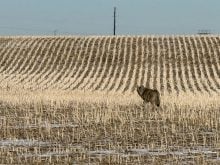An error in handling livestock feed in Saskatoon that temporarily quarantined 8,000 head of cattle on nine farms resulted in a negligible health risk for animals or humans.
This was the finding of the Canadian Food Inspection Agency last week. The agency found that a February accident involving a feed mill and the province’s only commercial renderer, Saskatoon Processors, put feather meal into a ruminant ration in Saskatoon.
That created inconvenience and losses for farmers, but little risk to the food supply.
The agency said animals that may have been exposed to the contaminated feed and their meat will not be eligible for export, but this does not affect their use for human consumption in Canada.
Read Also

Agritechnica Day 2: The future of tractor power, building quicker crop apps and large farms and tech
Agritechnica Day 2: The future of tractor power, building quicker crop apps with Syngenta and large farms and tech
“This measure is in place to meet the technical requirements of certain trading partners but in no other way affects their salability in Canada,” said the CFIA risk assessment.
The cattle are approved for movement and slaughter in Canada once the agency is satisfied that animal identification and traceability are ensured through tagging.
All movement, slaughter and sale of meat of the affected animals must be reported to the agency.
Canadian law requires that ruminant material not be fed to other ruminants.
Among those affected by the mistake were 250 deer, several dairy farms in the Saskatoon area, a feedlot in southwestern Saskatchewan and a purebred cattle operation in the southern part of the province.
There is no restriction on milk or calves exposed to milk from cows that may have received the feed said, the agency.














